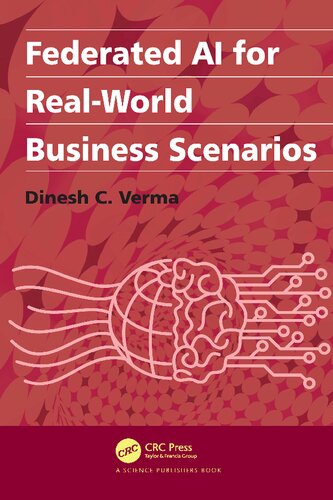

Most ebook files are in PDF format, so you can easily read them using various software such as Foxit Reader or directly on the Google Chrome browser.
Some ebook files are released by publishers in other formats such as .awz, .mobi, .epub, .fb2, etc. You may need to install specific software to read these formats on mobile/PC, such as Calibre.
Please read the tutorial at this link. https://ebooknice.com/page/post?id=faq
We offer FREE conversion to the popular formats you request; however, this may take some time. Therefore, right after payment, please email us, and we will try to provide the service as quickly as possible.
For some exceptional file formats or broken links (if any), please refrain from opening any disputes. Instead, email us first, and we will try to assist within a maximum of 6 hours.
EbookNice Team

Status:
Available4.7
9 reviewsThis book provides an overview of Federated Learning and how it can be used to build real-world AI-enabled applications. Real-world AI applications frequently have training data distributed in many different locations, with data at different sites having different properties and different formats. In many cases, data movement is not permitted due to security concerns, bandwidth, cost or regulatory restriction. Under these conditions, techniques of federated learning can enable creation of practical applications. Creating practical applications requires implementation of the cycle of learning from data, inferring from data, and acting based on the inference. This book will be the first one to cover all stages of the Learn-Infer-Act cycle, and presents a set of patterns to apply federation to all stages. Another distinct feature of the book is the use of real-world applications with an approach that discusses all aspects that need to be considered in an operational system, including handling of data issues during federation, maintaining compliance with enterprise security policies, and simplifying the logistics of federated AI in enterprise contexts. The book considers federation from a manner agnostic to the actual AI models, allowing the concepts to be applied to all varieties of AI models. This book is probably the first one to cover the space of enterprise AI-based applications in a holistic manner.